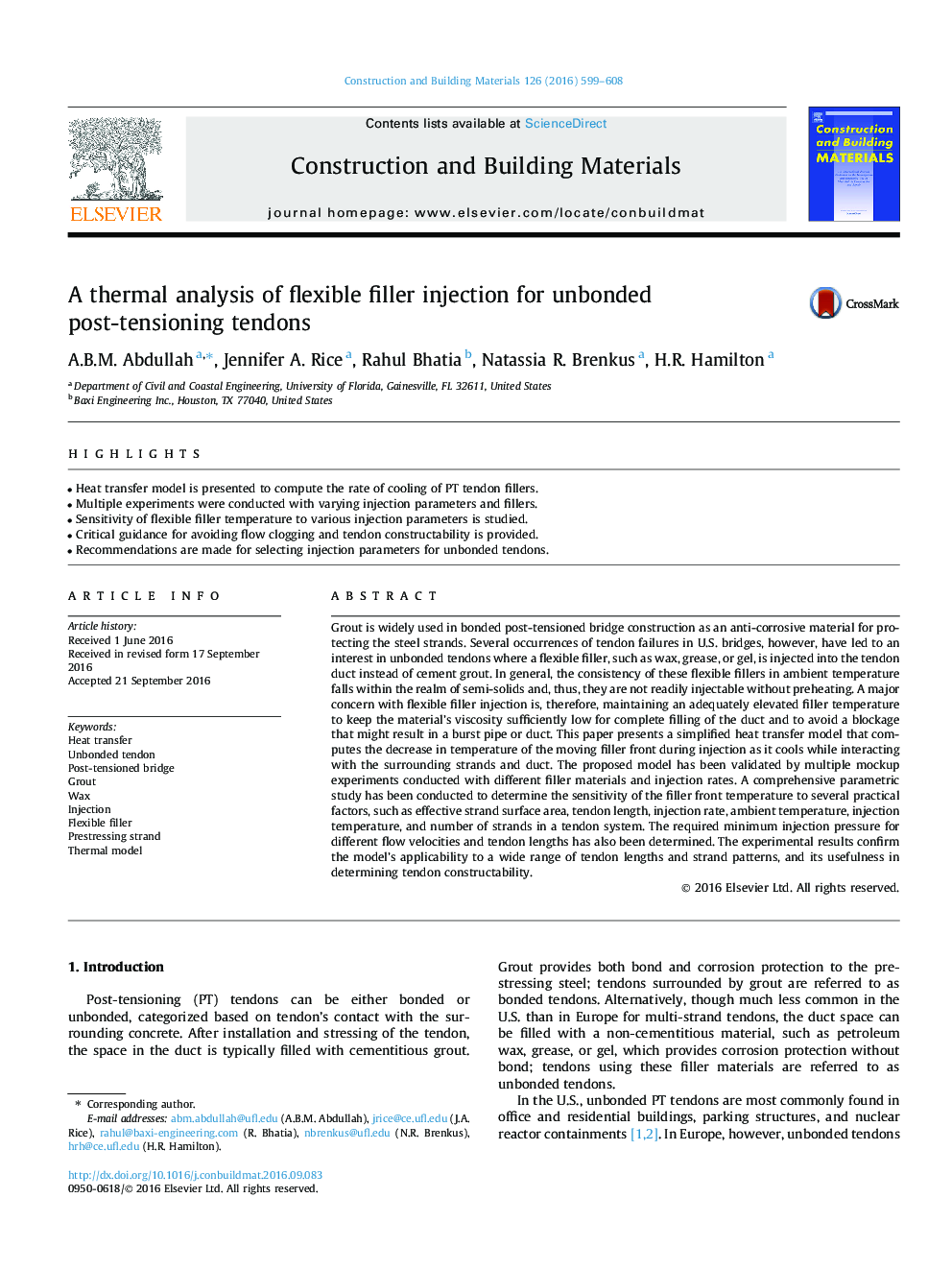| کد مقاله | کد نشریه | سال انتشار | مقاله انگلیسی | نسخه تمام متن |
|---|---|---|---|---|
| 6480935 | 1428780 | 2016 | 10 صفحه PDF | دانلود رایگان |
- Heat transfer model is presented to compute the rate of cooling of PT tendon fillers.
- Multiple experiments were conducted with varying injection parameters and fillers.
- Sensitivity of flexible filler temperature to various injection parameters is studied.
- Critical guidance for avoiding flow clogging and tendon constructability is provided.
- Recommendations are made for selecting injection parameters for unbonded tendons.
Grout is widely used in bonded post-tensioned bridge construction as an anti-corrosive material for protecting the steel strands. Several occurrences of tendon failures in U.S. bridges, however, have led to an interest in unbonded tendons where a flexible filler, such as wax, grease, or gel, is injected into the tendon duct instead of cement grout. In general, the consistency of these flexible fillers in ambient temperature falls within the realm of semi-solids and, thus, they are not readily injectable without preheating. A major concern with flexible filler injection is, therefore, maintaining an adequately elevated filler temperature to keep the material's viscosity sufficiently low for complete filling of the duct and to avoid a blockage that might result in a burst pipe or duct. This paper presents a simplified heat transfer model that computes the decrease in temperature of the moving filler front during injection as it cools while interacting with the surrounding strands and duct. The proposed model has been validated by multiple mockup experiments conducted with different filler materials and injection rates. A comprehensive parametric study has been conducted to determine the sensitivity of the filler front temperature to several practical factors, such as effective strand surface area, tendon length, injection rate, ambient temperature, injection temperature, and number of strands in a tendon system. The required minimum injection pressure for different flow velocities and tendon lengths has also been determined. The experimental results confirm the model's applicability to a wide range of tendon lengths and strand patterns, and its usefulness in determining tendon constructability.
Journal: Construction and Building Materials - Volume 126, 15 November 2016, Pages 599-608
